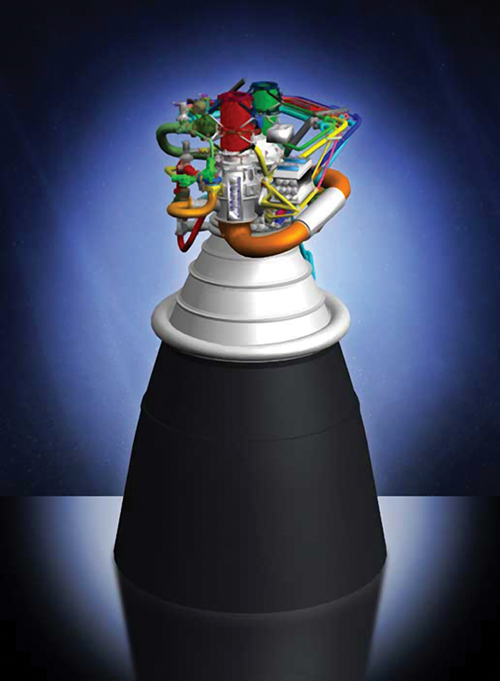Water-Based Coating Simplifies Circuit Board Manufacturing
Originating Technology/NASA Contribution
The Structures and Materials Division at Glenn Research Center is devoted to developing advanced, high-temperature materials and processes for future aerospace propulsion and power generation systems. The Polymers Branch falls under this division, and it is involved in the development of high-performance materials, including polymers for high-temperature polymer matrix composites; nanocomposites for both high- and low-temperature applications; durable aerogels; purification and functionalization of carbon nanotubes and their use in composites; computational modeling of materials and biological systems and processes; and developing polymer-derived molecular sensors. Essentially, this branch creates high-performance materials to reduce the weight and boost performance of components for space missions and aircraft engine components.
Under the leadership of chemical engineer, Dr. Michael Meador, the Polymers Branch boasts world-class laboratories, composite manufacturing facilities, testing stations, and some of the best scientists in the field.
Partnership
The Polymers Branch’s extensive knowledge of polyimide chemistry and its expertise in the synthesis of ultraviolet-light-curable polyimides was the critical component that allowed Advanced Coatings International (ACI), of Akron, Ohio, to prototype the platform chemistry for a polyimide-based, waterborne, liquid photoimagable coating ideal for the manufacture of printed circuit boards.
Glenn and its partners in the Glenn Alliance for Technology Exchange (GATE), the Ohio Aerospace Institute (OAI), and Battelle’s Great Lakes Industrial Technology Center (GLITeC) selected ACI as one of the winners of the GATE Partnership Award Program, a competition that targets small Ohio companies interested in enhancing their products and processes with NASA technologies.
ACI was one of 4 companies selected out of 38 applicants and received $50,000 to use toward product development, plus was eligible for an additional $50,000 to spend toward NASA assistance in developing their product. The company chose the additional NASA assistance, and Glenn set the company up with Meador to use his laboratories and polyimide chemistry expertise to develop the advanced water-based coating.
Product Outcome
Electronics manufacturers, constantly seeking ways to make their products smaller, lighter, and less expensive to produce, use advanced materials to meet ever-changing, demanding performance requirements. Often, they use polyimides as a substrate on which to form flexible circuit boards and create rigid/flexible hybrid circuits. The final step of this manufacturing process is to coat the circuit in an encapsulating, protective barrier, called a soldermask, usually a solvent-borne coating. These solvents tend to release harmful, volatile organic compounds (VOCs) into the atmosphere, both an environmental concern, and a safety hazard for employees exposed to the toxic fumes.
With Meador’s assistance, ACI developed an advanced water-based coating that can be used in the manufacture of printed circuit boards in place of a traditional solvent-based formula. These water-based polyimide coatings are environmentally friendly and offer an improved level of worker safety. In fact, clean up requires just soap and water. Since they offer a safe, effective alternative to traditional solvent-based methods of electronics manufacturing, they are the preferred alternative for the environmentally conscious manufacturer.
In addition to improved safety and reduced environmental impact, these coatings have the potential to reduce manufacturing and operating costs. After working with a customer to evaluate this method, ACI now estimates that this new technology has the potential to save manufacturers of these devices operating costs of up to 25 percent, a figure that is sure to attract attention.
Additionally, the technology improves resolution, enabling manufacturers to create the smaller physical features required by today’s electronics market. The environmentally friendly coating is photographically imaged onto the circuit board, providing a clear, precise, permanent protective layering.
Leveraging NASA expertise, ACI has managed to create an environmentally friendly, safe, and affordable process for manufacturing key components in a highly competitive, performance-driven market.

Devoted to developing advanced, high-temperature materials and processes, Glenn Research Center’s Structures and Materials Division works to create enabling technologies for future aerospace propulsion and power generation systems, such as the J-2X engine, planned to power the new crew launch vehicle’s upper stage and the Earth-departure stage of the cargo launch vehicle.













